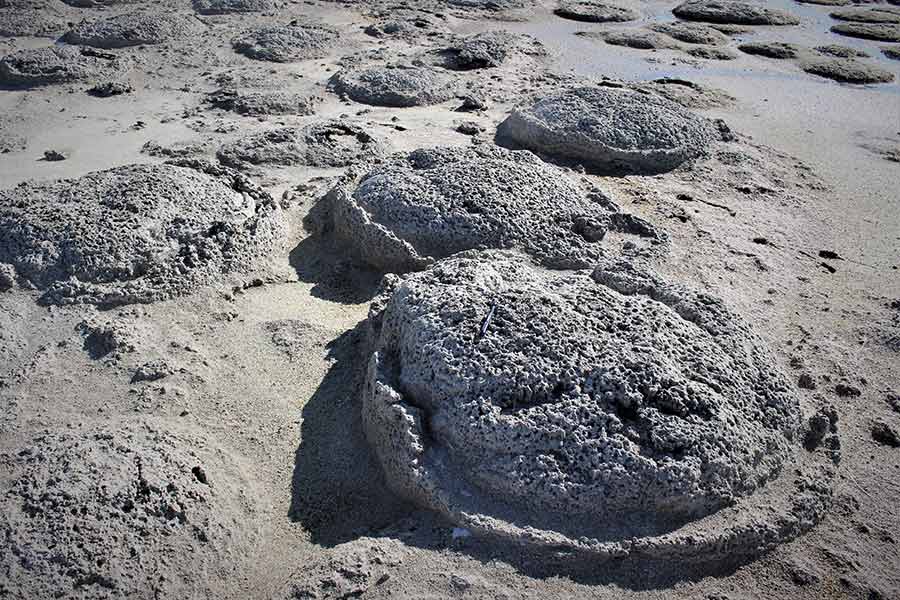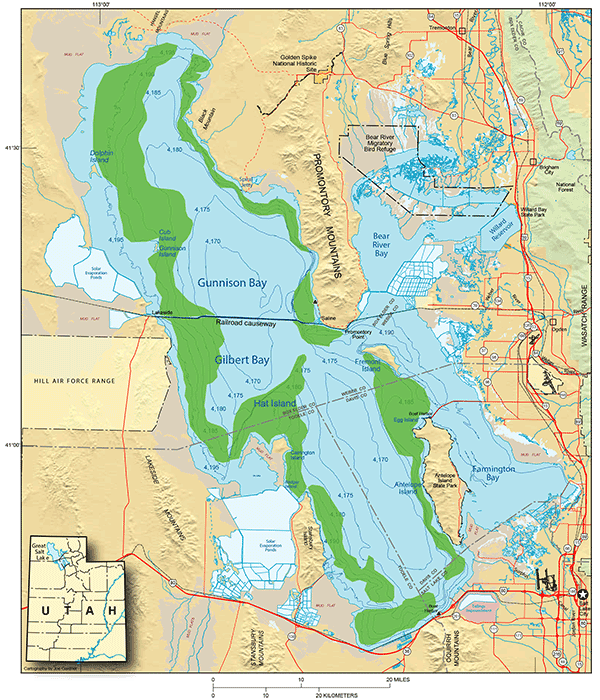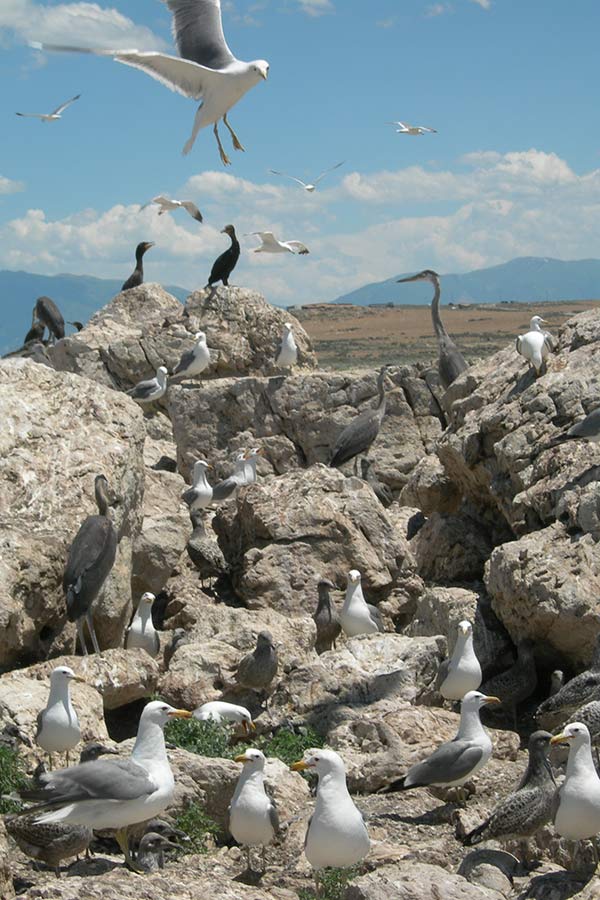- DWR proposes new e-tagging option for harvested wildlife, other items
- Planning a high-elevation hike this summer? How to avoid conflicts with mountain goats
- Utah Cutthroat Slam releases newest medallion after reaching over 1,750 completions
- Tips to prevent conflicts with bats
- Want to try hunting? Take a hunter education class or enroll in Utah's Trial Hunting Program
- Over 10K boats inspected for aquatic invasive species during Fourth of July weekend
- Blue Ribbon Fisheries program allocates $450K to enhance some of Utah's best fishing spots during 2025-26 projects
- See hummingbirds up close at banding event in northeastern Utah
Microbialites
Aka the "Great Salt Lake coral"
Many people think reefs, or coral formations, are found only at the bottom of the ocean. The Great Salt Lake, however, also has massive corals from thousands of years of biological and geological activity.
Great Salt Lake coral is made up primarily of microbialites, which are living mounds of calcium and magnesium carbonate deposits produced by the blue-green algae Apthanothece packardii and other organisms. These living fossils create a distinctive coral that can be found at shallow bottoms on the lake's periphery and in shore areas where wave activity is strong. They are from hundreds to many thousands of years old and are among the first organisms to produce oxygen on earth.
Microbialites can be as small as a few inches or as tall as three to four feet. Horizontally, they may be up to 12 feet in diameter!
These coral, also known as bioherms, play an important role in the Great Salt Lake's ecosystem — not only do they provide important habitat for algae, as well as food and a morphing location for brine fly larvae, they can also serve as an additional food and oxygen source for brine shrimp when the shrimp have grazed down algae in pelagic zones.
Stansbury Island, the northwest end of Antelope Island and the southwest side of the Promontory Range are fantastic spots to find microbialites. The western side of the lake is plentiful as well. Overall, microbialites cover about 23 percent of the lake bottom.
The green areas on the map below show where microbialites are located:




















